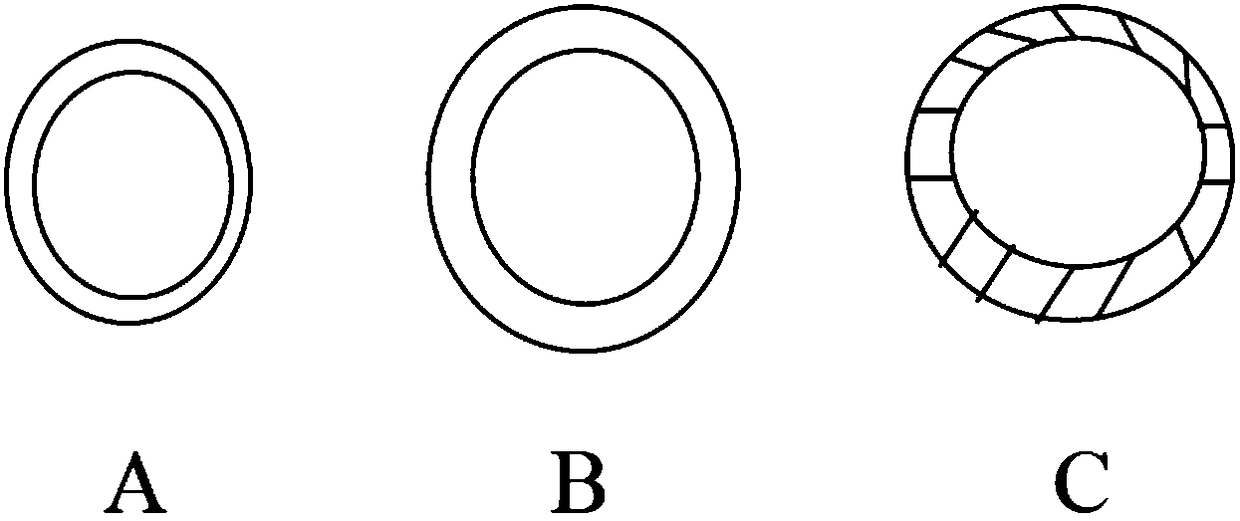Method for ascertaining degree of maturity of tridacna ovums
A technology of maturity and clam, which can be used in measuring devices, material analysis by optical means, instruments, etc., and can solve problems such as loss of parent shells, difficulty in egg maturity, etc.
- Summary
- Abstract
- Description
- Claims
- Application Information
AI Technical Summary
Problems solved by technology
Method used
Image
Examples
Embodiment 1
[0016] A. Tridacna parent selection: In May 2015, 10 giant clams were collected from Hainan and transported to the Hainan Tropical Marine Biology Experimental Station of the South China Sea Institute of Oceanology, Chinese Academy of Sciences. Sand-filtered seawater at a temperature of 26-28°C. Select a healthy and undamaged individual with a shell length of 30-40cm and an average weight of 5kg as the identification object of gonad maturity;
[0017] B. Collection of gonad tissue: put the selected giant clam parent into a glass fiber reinforced plastic bucket filled with seawater, and mark it well. Use a 5mL plastic syringe to extend into the outlet hole of the giant clam, insert it into the surface of the gonad, and draw 1.5mL of gonad tissue into a centrifuge tube to avoid puncturing the kidney or other important organs. After one instance was taken, the syringe and needle were rinsed with seawater and sterilized with alcohol before being used on another instance.
[0018]...
Embodiment 2
[0021] A. Tridacna parent selection: In June 2015, 10 giant clams were collected from Hainan and transported to the Hainan Tropical Marine Biology Experimental Station of the South China Sea Institute of Oceanology, Chinese Academy of Sciences. After cleaning, they were slightly inflated and temporarily raised at a salinity of 32ppt. Sand-filtered seawater at a temperature of 26-28°C. Select healthy and undamaged individuals with a shell length of 30-40cm and an average weight of 4kg as gonad maturity identification objects;
[0022] B. Collection of gonad tissue: put the selected giant clam parent into a fiberglass bucket filled with fresh seawater, and mark it. Use a 5mL plastic syringe to extend into the outlet hole of the giant clam, insert it into the surface of the gonad, and draw 1.5mL of gonad tissue into a centrifuge tube to avoid puncturing the kidney or other important organs. After one instance was taken, the syringe and needle were rinsed with seawater and steril...
Embodiment 3
[0026] A. Tridacna parent selection: In March 2016, 20 giant clam oysters were collected from Hainan and transported to the Hainan Tropical Marine Biology Experimental Station of the South China Sea Institute of Oceanology, Chinese Academy of Sciences. Sand filtered sea water at 26-28°C. Select a healthy and undamaged individual with a shell length of 30-40cm and an average weight of 5kg as the identification object of gonad maturity;
[0027] B. Collection of gonad tissue: put the selected giant clam parent into a fiberglass bucket filled with fresh seawater, and mark it. Use a 5mL plastic syringe to extend into the outlet hole of the giant clam, insert the superficial gonad tissue and draw 1.5ml of gonad tissue into a centrifuge tube to avoid puncturing the kidney or other important organs. After one instance was taken, the syringe and needle were rinsed with seawater and sterilized with alcohol before being used on another instance.
[0028] C. Microscope observation: Obs...
PUM
| Property | Measurement | Unit |
|---|---|---|
| Weight | aaaaa | aaaaa |
| Weight | aaaaa | aaaaa |
| Weight | aaaaa | aaaaa |
Abstract
Description
Claims
Application Information
 Login to View More
Login to View More - R&D
- Intellectual Property
- Life Sciences
- Materials
- Tech Scout
- Unparalleled Data Quality
- Higher Quality Content
- 60% Fewer Hallucinations
Browse by: Latest US Patents, China's latest patents, Technical Efficacy Thesaurus, Application Domain, Technology Topic, Popular Technical Reports.
© 2025 PatSnap. All rights reserved.Legal|Privacy policy|Modern Slavery Act Transparency Statement|Sitemap|About US| Contact US: help@patsnap.com

